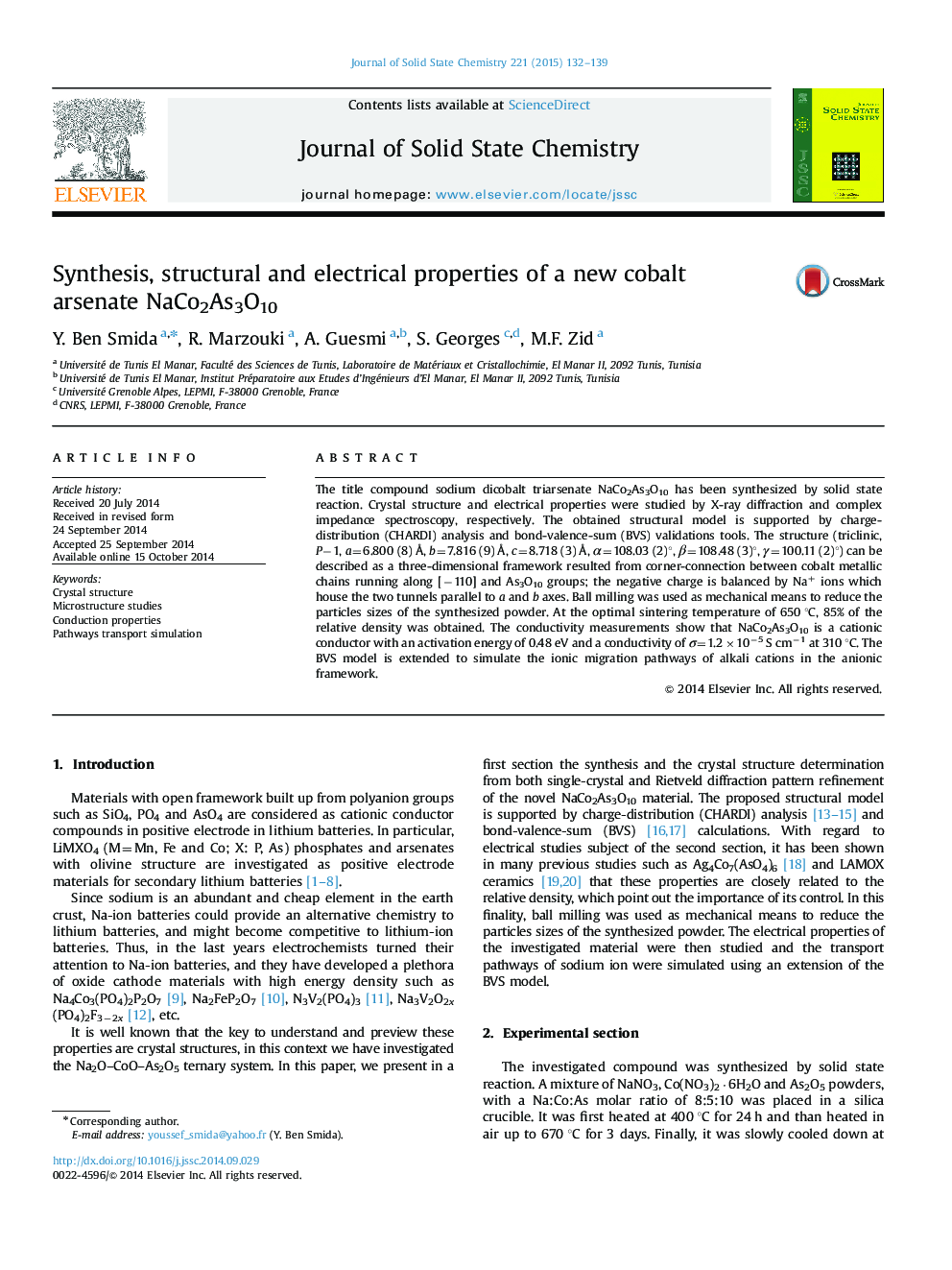| Article ID | Journal | Published Year | Pages | File Type |
|---|---|---|---|---|
| 1329613 | Journal of Solid State Chemistry | 2015 | 8 Pages |
•A new single crystal NaCo2As3O10 was grown by solid state reaction and its structure determined by single-crystal X-ray diffraction.•The purity of the powder sample was verified by Rietveld refinement.•The CIS measurements were optimized and the obtained spectra were fitted by electrical equivalent circuits.•The conduction pathways for Na+ cations are simulated by means of the bond valence sum model.
The title compound sodium dicobalt triarsenate NaCo2As3O10 has been synthesized by solid state reaction. Crystal structure and electrical properties were studied by X-ray diffraction and complex impedance spectroscopy, respectively. The obtained structural model is supported by charge-distribution (CHARDI) analysis and bond-valence-sum (BVS) validations tools. The structure (triclinic, P−1, a=6.800 (8) Å, b=7.816 (9) Å, c=8.718 (3) Å, α=108.03 (2)°, β=108.48 (3)°, γ=100.11 (2)°) can be described as a three-dimensional framework resulted from corner-connection between cobalt metallic chains running along [−110] and As3O10 groups; the negative charge is balanced by Na+ ions which house the two tunnels parallel to a and b axes. Ball milling was used as mechanical means to reduce the particles sizes of the synthesized powder. At the optimal sintering temperature of 650 °C, 85% of the relative density was obtained. The conductivity measurements show that NaCo2As3O10 is a cationic conductor with an activation energy of 0.48 eV and a conductivity of σ=1.2×10−5 S cm−1 at 310 °C. The BVS model is extended to simulate the ionic migration pathways of alkali cations in the anionic framework.
Graphical abstract1D pathways link Na atoms along the a-axis with bond valence mismatch |ΔV(Na)|=0.64 v.u.Figure optionsDownload full-size imageDownload as PowerPoint slide
